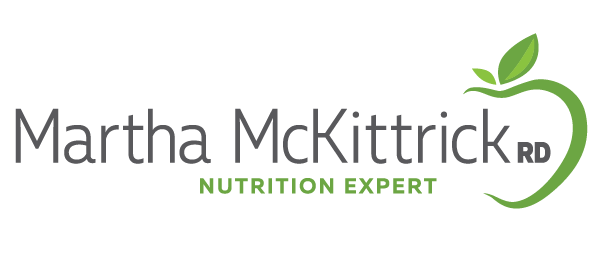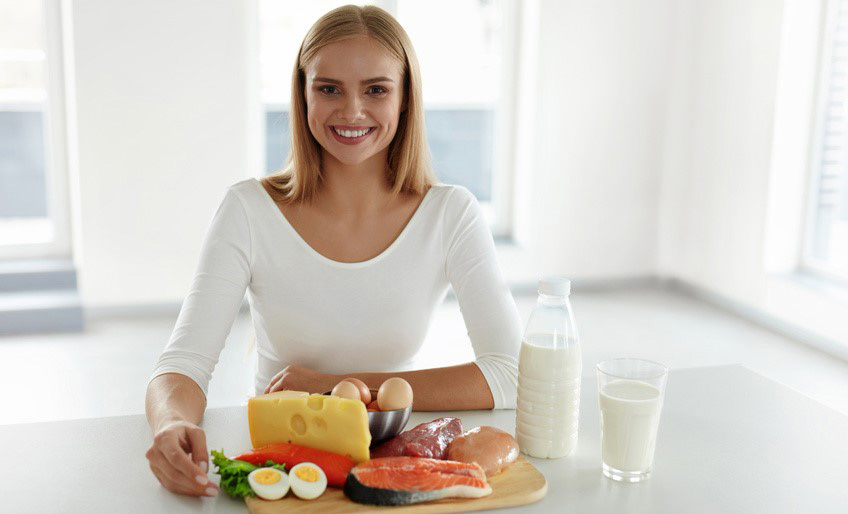How Much Protein Do You Need a Day?
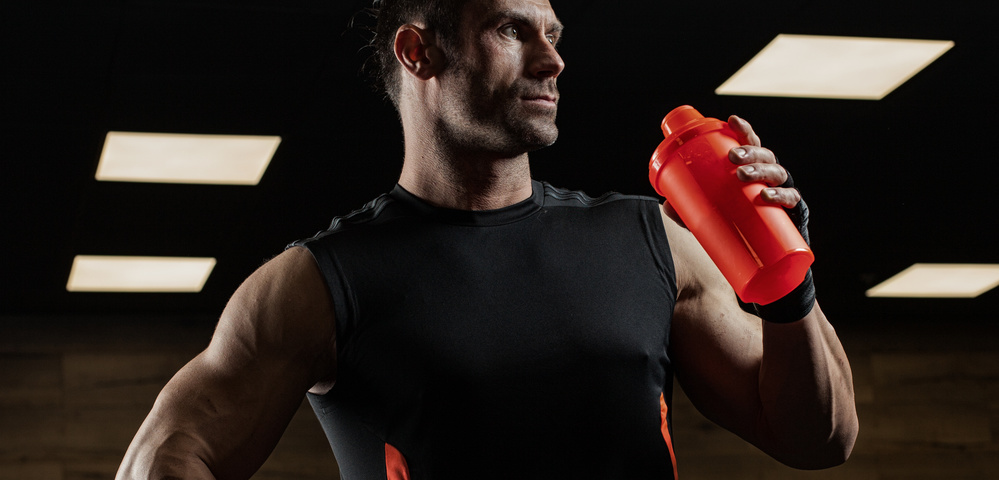
Protein is an important nutrient for overall health. If you are trying to lose weight, get toned, build muscle mass, or 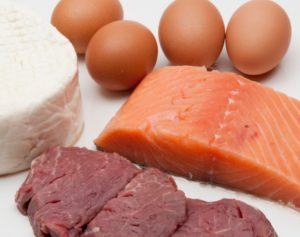 prevent loss of muscle that occurs with aging, it’s especially important that you consume an adequate amount of protein each day. Most of us easily meet our protein needs through a varied diet. However, there are some groups of people that may not. This includes those on weight loss diets, especially women and older adults. Read on to learn how much protein you need a day as well as the protein content of common foods. This is part 2 of a 3 part blog series on Protein. Stay tuned for my upcoming blog post on How to Time Your Protein Intake & Meal Planning.
prevent loss of muscle that occurs with aging, it’s especially important that you consume an adequate amount of protein each day. Most of us easily meet our protein needs through a varied diet. However, there are some groups of people that may not. This includes those on weight loss diets, especially women and older adults. Read on to learn how much protein you need a day as well as the protein content of common foods. This is part 2 of a 3 part blog series on Protein. Stay tuned for my upcoming blog post on How to Time Your Protein Intake & Meal Planning.

Functions of protein in the body
When you hear the word protein you probably think about muscles. While protein does play an important role in building and preserving muscles, this is just the tip of the iceberg. Protein is vital to your health and is a part of all your body’s physiological functions. It is used for building and repairing tissues, making hormones, enzymes and other body chemicals. It provides energy, boosts immunity, aids in brain health, and builds stronger bones. In addition, protein plays an important role in weight loss.

How much protein do you need a day?
Our protein needs are based on factors including body weight, gender, age, level of activity, how much lean mass we have and goals related to weight loss or muscle development. There is controversy among medical experts regarding the optimal amount of protein needed for health as well as the type and timing of protein. Below are some formulas you can use to calculate your protein requirements. Most of them will need you to convert your weight into kilograms – divide your weight in pounds by 2.2 to get kilograms (kg) and then multiply by an activity factor below.
The Recommended Daily Allowances (RDA) are based on age and weight and how much protein is needed to 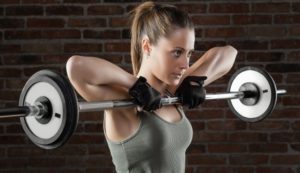 keep the body in positive nitrogen balance (this means you are not breaking down your muscles to use for energy)
keep the body in positive nitrogen balance (this means you are not breaking down your muscles to use for energy)
– Sedentary adults needs approximately 0.8 g/kg of body weight/day. For example, a 150 pound woman would need 54 gm protein a day.
– Athletes need between 1.2 to 2.0 g/kg/ day. Higher intakes may be indicated for short periods during intensified training or when reducing energy intake. In the past, protein needs were based on whether an individual was an “endurance” or “strength/power” athlete. For example, a 170 lb athlete would need 84-154 grams of protein a day

– Moderately active adult could aim for 1-1.3 gm protein/kg a day (my recommendation!)
Many health experts feel the RDA may be too low for some people, including older adults or those on a weight loss diet.
– Older adults need ~ 1.2-1.6 gm/kg a day. Research has demonstrated that aging is associated with an impairment of skeletal muscle to responding to low doses of protein, which may lead to sarcopenia. For example, a 130 pound senior would need 70-94 grams of protein.
–Dieters have elevated protein needs for the reasons stated in my previous blog post. Many experts, including Donald Layman, PhD, recommend ~ 1.4-1.5 grams of protein/kg/body weight. Other experts recommend 25-35% of calories coming from protein. So for example, if the 150 pound woman was on a 1500 calorie weight loss diet and was moderately active, she could aim for 25-30% of her calories from protein. This would come out to 93 gm protein a day. To get this calculation: 1500 x .25 divided by 4 (protein has 4 calories per gram) = 93 gm protein. This would be easy to figure out if you are using an app to track what you eat. Most of them calculate what percentage of your diet comes from fat, carbs and protein. I often recommend a diet that is between 25-30% protein for weight loss for my clients. But jt may be even more important to how you “time” your protein intake. Stay tuned for an upcoming blog post on this!
Layman, PhD, recommend ~ 1.4-1.5 grams of protein/kg/body weight. Other experts recommend 25-35% of calories coming from protein. So for example, if the 150 pound woman was on a 1500 calorie weight loss diet and was moderately active, she could aim for 25-30% of her calories from protein. This would come out to 93 gm protein a day. To get this calculation: 1500 x .25 divided by 4 (protein has 4 calories per gram) = 93 gm protein. This would be easy to figure out if you are using an app to track what you eat. Most of them calculate what percentage of your diet comes from fat, carbs and protein. I often recommend a diet that is between 25-30% protein for weight loss for my clients. But jt may be even more important to how you “time” your protein intake. Stay tuned for an upcoming blog post on this!
Protein content of common foods
| FOOD | PORTION | CALORIES | PROTEIN gm | FAT gm | SATURATED FAT gm |
| Animal protein | |||||
| Meat/poultry/fish | |||||
| Lean beef. eye of round, all fat trimmed | 3 oz cooked | 165 | 24 | 7.7 | 3 |
| Pork, lean cut, tenderloin | 3 oz cooked | 147 | 24 | 5.1 | 2.2 |
| Turkey breast, skinless | 3 oz cooked | 115 | 25 | 0.6 | <1 |
| Chicken breast, skinless | 3 oz cooked | 140 | 26 | 3.1 | 1.2 |
| Tuna, light, canned in water | 3 oz | 100 | 22 | 0.7 | <1 |
| Shrimp, moist heat | 3 oz cooked | 85 | 17 | 0.9 | <1 |
| Salmon, Atlantic | 3 oz cooked | 175 | 19 | 10.5 |
2 |
Dairy |
|||||
| Greek yogurt, plain, Fage 2% | 7 oz | 150 | 20 | 4 | 3 |
| Yogurt, Greek flavor (pineapple)Chobani, 2% | 5.3 oz | 140 | 11 | 3 | 2 |
| Yogurt, low fat, fruit blend, Stonyfield | 5.3 oz | 170 | 8 | 3 | 1.5 |
| Egg, large whole | 1 | 78 | 6 | 5.3 | 1.6 |
| Egg, large, white | 1 | 17 | 3.6 | <1 | 0 |
| Milk, whole, low fat | 8 oz | 150 | 8 | 8 | 5 |
| Milk, 1% | 8 oz | 105 | 8.5 | 2.4 | 1.5 |
| Cheese (most types including swiss, cheddar,etc.) |
1 oz | 105-114 | 7-8 | 8-9 | 5-6 |
| Cottage cheese, 1% | 1/2 cup | 82 | 13-16 | 1.2 | <1 |
| Vegetable protein | |||||
Soy *see below |
|||||
| Tempeh | 4 oz, 1/2 cup | 160 | 15 | 9 | 1.4 |
| Tofu, firm | 4 oz, 1/2 cup | 88 | 10 | 5 | 1 |
| Edamame, in pod | 1 cup | 150 | 12 | 4.6 | 0 |
| Soy yogurt, vanilla, Stonyfield Farm | 6 oz | 150 | 7 | 3 | 0 |
| Textured vegetable protein (TVP), cooked | 1/4 cup dry | 80 | 12 | 0 | 0 |
| Seitan *wheat gluten, NOT soy | 4 oz, 1/2 cup | 160 | 26 | 2 | 0 |
Beans/legumes |
|||||
| Lentils | 1 cup | 230 | 18 | 1 | 0 |
| Black beans | 1 cup | 280 | 18 | 0 | 0 |
| Split peas, cooked | 1 cup | 231 | 16 | 1 | < 1 |
| Veggie burger (varies & may/may not contain soy) | 1 burger | 90-150 | 4-13 | 1-4 | ~1 |
Milk/Yogurt alternatives |
|||||
| Soy milk, plain, Silk brand | 8 oz | 90 | 6 | 3.5 | <1 |
| Almond milk, Blue Diamond, original | 8 oz | 60 | 1 | 2.5 | 0 |
| Coconut milk, plain | 8 oz | 70 | <1 | 4.5 | 4 |
| Coconut milk yogurt, plain | 8 oz | 110 | <1 | 7 | 7 |
Nuts/seeds |
|||||
| Sunflower seeds | 1/4 cup | 201 | 8 | 18 | 2 |
| Cashews | 1/3 cup | 247 | 7 | 21 | 4 |
| Peanut butter | 2 Tbsp | 208 | 8 | 16 | 2 |
| Almonds | 1 oz, 24 nuts | 164 | 6 | 14 | 1 |
| Flaxseeds, ground | 2 Tbsp | 60 | 3 | 4.5 | <1 |
| Chia seeds | 2 Tbsp | 120 | 6 | 6 | 0 |
Grains/vegetables |
|||||
| Brown rice, cooked | 1 cup | 212 | 4.5 | 1.6 | <1 |
| Barley, cooked | 1 cup | 270 | 7 | 2 | <1 |
| Quinoa, cooked | 1 cup | 222 | 8 | 3.6 | 0 |
| Cereal, high protein (i.e. Kashi Go Lean, Special K High Protein) | 1 cup | ~ 150 | 13 | 1 | 0 |
| Oatmeal, steel cut | 1/4 cup dry | 170 | 7 | 6 | <1 |
| Most vegetables | 1 cup cooked | 40 | 5 | 0 | 0 |
Protein powders |
|||||
| Pea protein | 1 scoop | 105 | 25 | 0 | 0 |
| Whey protein choc or van, various brands | 1 scoop | 100-130 | 18-23 | 2 | 1 |
| Hemp protein | 1 scoop (4 Tbsp) | 100 | 12 | 3 | 0 |
Protein bars |
|||||
| Quest bar | 1 bar | 210 | 20 | 10 | 1.5 |
| Simply Whey protein bar | 1 bar | 140 | 15 | 3 | 1.5 |
*Many high protein foods (i.e. cereals and energy bars) have added in soy protein to bump up the protein intake
*Fat and fruit contains negligible amounts of protein, while vegetables contain approximately 4 grams per cup cooked, 2-3 grams per cup raw.
*Note that above numbers are only averages. Different websites reports different numbers.
Recommendations for the healthy protein choices:
- Choose lean or low-fat meat.
- Remove the skin from poultry.
- Include fish in the diet 2-3 times a week.
- Limit/avoid fatty luncheon meats like salami, bologna, and hot dogs
- Don’t become overly obsessed with protein and neglect other components of a healthy diet including fruit, vegetables, whole grains, calcium rich foods and fats
- Include a mix of complete and incomplete proteins (this usually means protein from animal and plant based origins … unless you are a vegan!
- Vegan sources of protein include: tofu, edamame, tempeh, seitan, nuts and seeds, beans and lentils.
- You can also get small amounts of protein from vegetables
While it’s important to meet your protein needs, it’s just as important to eat it at the right times. Stay tuned for my upcoming blog post on Protein Timing and Meal Planning
http://www.todaysdietitian.com/newarchives/060114p22.shtml
http://www.vrg.org/nutrition/protein.php
http://www.vrg.org/nutrition/protein.php
http://ndb.nal.usda.gov/ndb/search/list
RELATED POSTS
MEET MARTHA
I especially love problem-solving, whether it’s helping women defeat issues plaguing them for years, helping a busy executive find practical ways to get heart healthy, or providing tips to help you reverse diabetes. That’s why I’m on a constant quest to expand my knowledge by staying on top of the latest research.
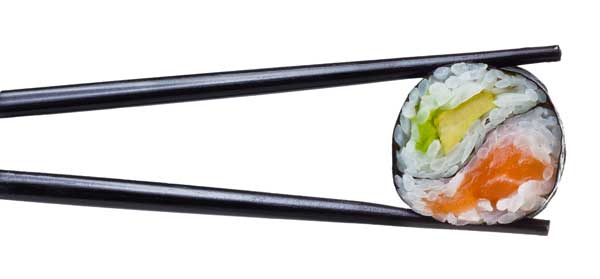
20 Ways To Eat Out 550 Calories or Less!
No time to cook? We’ve got you covered. Here are 20 healthy meals from a variety of cuisines that won’t pack on the pounds. Most of them also have less than 30 grams of carbs.
Subscribe to my newsletter and get this free download.
